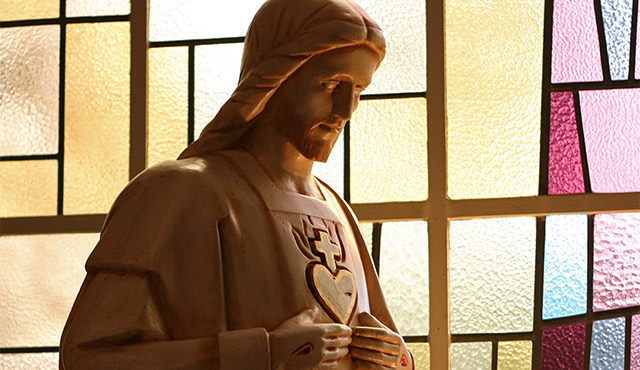When Father Sy Nguyen’s leg was crushed in a motorcycle accident, he prayed for a miracle. Facing the loss of the leg after 64 days in the hospital and suffering wounds that wouldn’t heal, one day he received oil from the Oratory of St. Joseph and St. Andre Bisset.
“I was at the end of my rope,” says the pastor at St. Martin De Porres Church in Yorba Linda. “I said a prayer and poured the oil in my wounds.”
The next day, Father Sy says his wounds were healed. He still faced the prospect of risky bone graft surgery to replace missing bone in his shin. However, after a second application, he says the bone had regrown and surgery wasn’t needed.
“I believe it’s a miracle. My doctor didn’t say it was a miracle, of course,” Father Sy recalls, “but he did say ‘I don’t see these things happening.’”
Each day we are surrounded by miracles; some big, some small. There are extraordinary occurrences and remarkable coincidences. Sometimes things may seem miraculous but are not bona fide miracles.
So, what exactly constitutes a miracle? In the context of the Catholic faith, the answer can be complicated.
Father Troy Schneider, parochial vicar at Holy Family Cathedral in Orange, says, “There are miracles all around us; we just have to open our eyes to them.”
However, while everyday miracles have their role in glorifying God, in the Church they often play another important role.
“When we talk of miracles within the Church, it usually has to do with the cause of sainthood and apparitions,” Father Troy says.
To be a saint, posthumous miracles recognized by the Church must be attached to the candidate: generally one miracle for beatification and two for full canonization.
The issue of saints and miracles arose in April when Pope Francis presided over a liturgy in St. Peter’s Square as Pope John Paul II and Pope John XXIII became saints.
In the Oxford Dictionary, the first definition of a miracle is “a surprising and welcome event that is not explicable by natural or scientific laws and is therefore considered to be the work of a divine agency.”
The word is derived from the Latin “miraculum,” an object of wonder.
Subsequent definitions are “a highly improbable or extraordinary event, development or accomplishment” and “an amazing product or achievement, or an outstanding example of something.”
The Catholic Encyclopedia defines miracles as “wonders performed by supernatural power as signs of some special mission or gift and explicitly ascribed to God.”
The definition is followed by 13,000 words on nature, historical understanding and errata concerning miracles, proving that there are no easy answers to what separates the miracle from the miraculous.
Thomas Aquinas wrote that God operates in a hidden realm man cannot comprehend and “therefore, properly speaking, miracles are works done by God outside the order usually observed in things.”
Father Troy says, “If it doesn’t have the intent of glorifying God it wouldn’t be a miracle.”
As an example, he says demons may have extraordinary powers, but they are intended to deceive.
Ascribing miracles is the final step in the case for sainthood. These are almost always medical cures that are sudden, complete and inexplicable and achieved either directly by the prospective saint or through prayers in which the would-be saint intercedes.
An important distinction: although only God has the power to create miracles, he can share his power with saints.
The journey of a saint typically begins at the diocesan level where there is usually consensus that a person lived a holy, heroic life.
Anyone can take up the cause, but it is up to a bishop to decide whether to proceed. The successful case is then advanced to the Congregation for the Causes of Saints and, eventually, to the pope for a final decision.
The Church goes through an exhaustive process in considering miracles, Father Troy says. In the case of something medical, professionals and data are carefully scrutinized and verified to determine the cure is beyond all known science.
Additionally, extensive witness testimony is taken and vetted. All of it is challenged by a canon lawyer playing the role of devil’s advocate, to further ensure the legitimacy.
In the case of John Paul II, a 2,000-page document was submitted before miracles were even considered. Father Troy says documents for Mother Teresa filled a 144-square-foot room.
Sainthood is not the only place for consideration of miracles. They can also be connected to an apparition. However, Father Troy says that although an apparition itself may be supernatural, it isn’t miraculous until a specific, inexplicable event is connected to its appearance.
And, according to Saint Augustine, “The conversion of one sinner is a greater act of omnipotence than the creation of the universe.”
So miracles can be big or seemingly small.
“A miracle to me is when you hear a young child laugh,” Father Troy says. “There is something that does to the being that is supernatural.”

